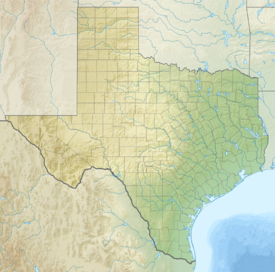Fort Lipantitlán
| Battle of Lipantitlán | |||||||
|---|---|---|---|---|---|---|---|
| Part of the Texas Revolution | |||||||
|
|||||||
| Belligerents | |||||||
| Texian rebels |
|
||||||
| Commanders and leaders | |||||||
| Ira Westover | Nicolás Rodríguez | ||||||
| Strength | |||||||
| 60–70 men | 90 men | ||||||
| Casualties and losses | |||||||
| 1 wounded | 3–5 killed 14–17 wounded |
||||||
|
|
|||||||
The Battle of Lipantitlán, also known as the Battle of Nueces Crossing, was fought along the Nueces River on November 4, 1835 between the Mexican Army and Texian insurgents, as part of the Texas Revolution. After the Texian victory at the Battle of Goliad, only two Mexican garrisons remained in Texas, Fort Lipantitlán near San Patricio and the Alamo Mission at San Antonio de Béxar (modern-day San Antonio in the U.S. state of Texas). Fearing that Lipantitlán could be used as a base for the Mexican army to retake Goliad and angry that two of his men were imprisoned there, Texian commander Philip Dimmitt ordered his adjutant, Captain Ira Westover, to capture the fort.
The commander of Fort Lipantitlán, Nicolás Rodríguez, had been ordered to harass the Texian troops at Goliad. Rodríguez took the bulk of his men on an expedition; while they were gone, Westover's force arrived in San Patricio. On November 3, a local man persuaded the Mexican garrison to surrender, and the following day the Texians dismantled the fort. Rodríguez returned as the Texians were crossing the swollen Nueces River to return to Goliad. The Mexican soldiers attacked, but the longer range of the Texians rifles soon forced them to retreat. One Texian was injured, 3–5 Mexican soldiers were killed, and 14–17 were wounded.
The injured Mexican troops were allowed to seek medical treatment in San Patricio, and the remaining Mexican soldiers retreated to Matamoros. The Texians now had full control of the Texas Gulf Coast, which meant that the troops stationed at San Antonio de Béxar could only receive reinforcements and supplies overland. Historian Bill Groneman believes that this contributed to the eventual Mexican defeat at the siege of Béxar, which expelled all Mexican troops from Texas. The former site of the fort is now a Texas historic site.
...
Wikipedia

